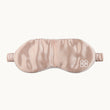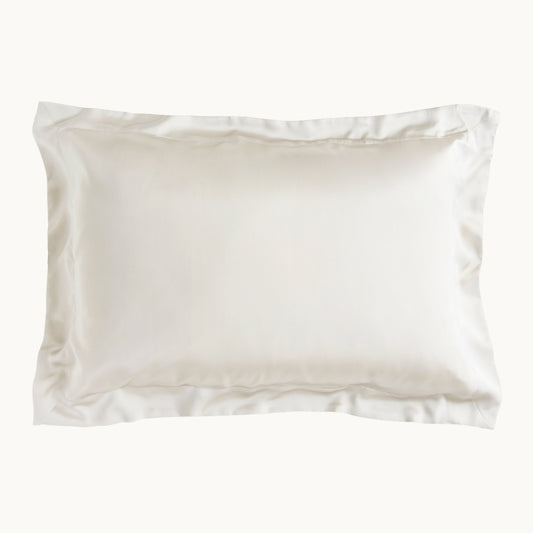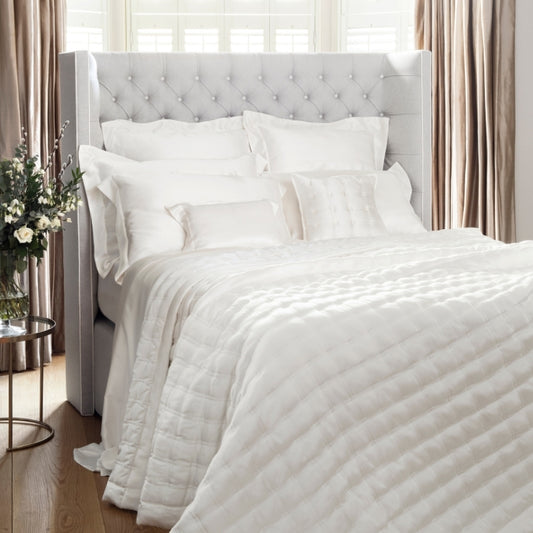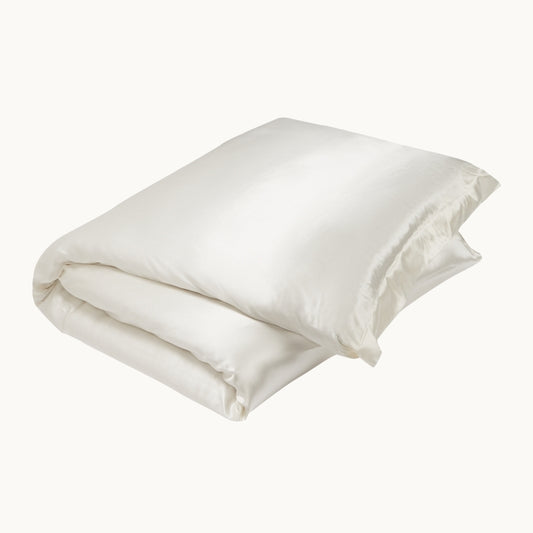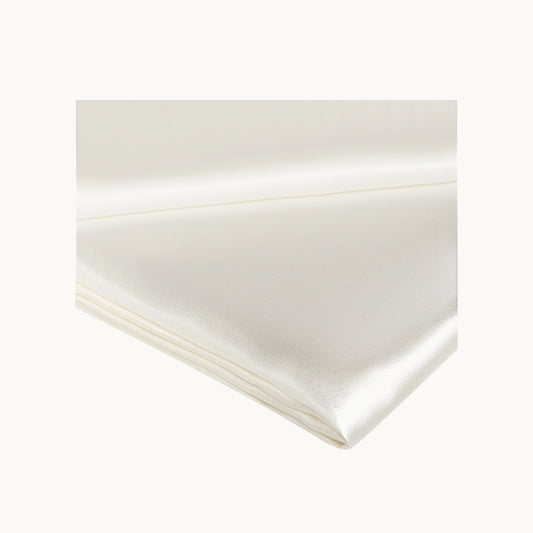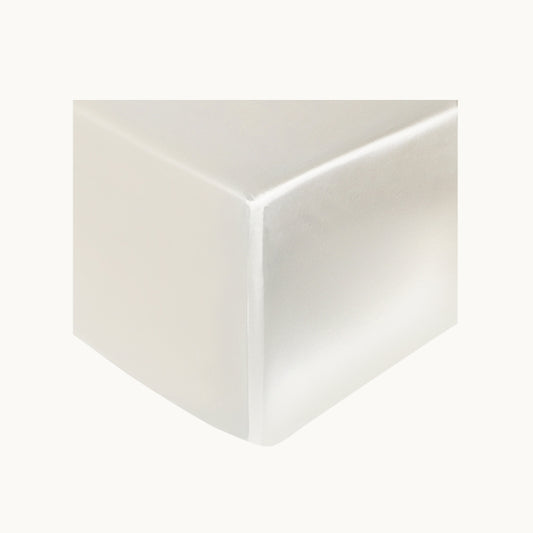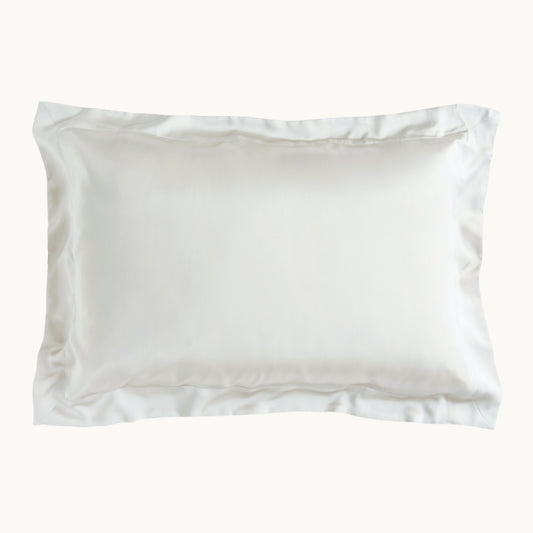Cotton and silk are both found globally across a range of different textile products, from bedding to clothing and accessories. Cotton is more commonly found due to its soft feel and lower cost, though both fabrics have advantages and disadvantages. For example, silk is expensive, but can help to improve skin and hair due to its anti-absorbent properties.
Read on as our silk experts explore the differences between cotton and silk, so that you can choose the right fabric for you and indulge in a blissful night’s sleep.
Which is softer, cotton or silk?
Whilst cotton is soft, it cannot be compared to the softness of silk. The origin of the term ‘silky soft’ comes from the luxurious feel of silk. The material is made of fibroin protein which is smooth and flat when looked at microscopically. This means that, with no coarseness or ridges, the fabric feels ultra-soft and luxurious, something which can be hard to imagine without having slept in silk bedding.
In comparison to silk’s naturally soft splendour, cotton, while knowingly soft, has fibres which are often twisted and rigid. This generates friction and coarseness, meaning cotton can tug or catch the hair and skin, especially when it is used for bedding.
Cotton is also more prone to pilling overtime, which reduces the soft feel of the fabric. Even the most expensive Egyptian cotton cannot beat silk in this arena, though this luxury comes at a price as natural silk cannot compete with the price of cotton due to the skilled process required for creating silk garments.
Beauty Box Mulberry Silk Pillowcase
Why is silk more costly than cotton?
Making silk is a time-consuming process that cannot be hurried by any man-made machinery. It takes thousands of silkworm cocoons to make just one kilogram of silk. To produce silk, these cocoons are carefully treated, dyed and spun into beautiful silk products. From start to finish, this is a labour-intensive and slow process that requires skilled craftsmanship to create a quality luxury product.
Cotton is a cheaper fabric due to the comparatively easy method of growing and picking cotton. Organic cotton is more labour-intensive, and therefore more expensive than non-organic cotton, but still much cheaper than silk. In this instance, cotton is the most cost-effective choice.
However, silk should be considered as more of an investment. Despite the production method resulting in a high price tag, silk is often considered great value for money due to the benefits it presents for skin, hair, overall feel, and comfort. When cared for correctly, silk is a tensile and highly-durable material which can last many years, again adding to the value for money aspect.
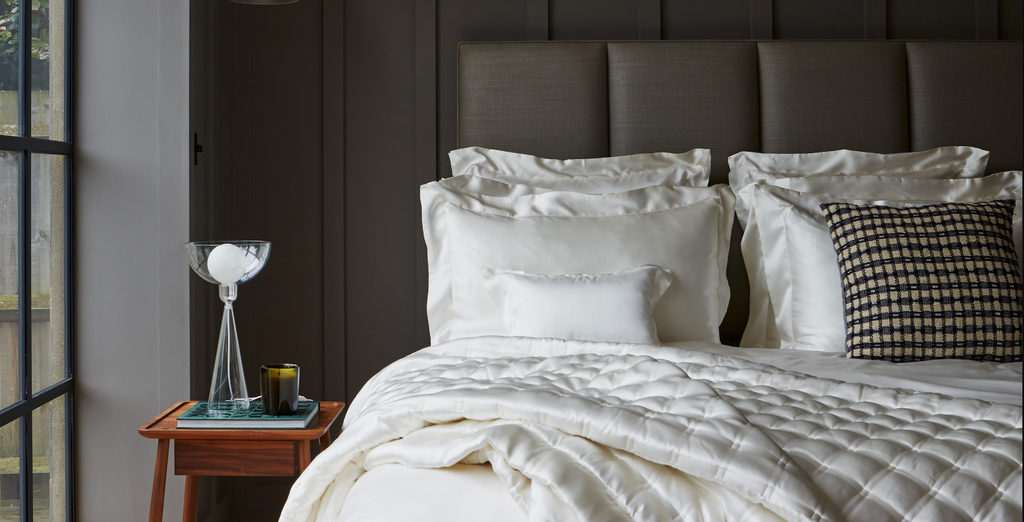
Gingerlily Signature Bedding Collection - Ivory
Is silk cooler than cotton?
There are misconceptions that silk is sticky and uncomfortable during the summer months or too cold to use during the winter. Silk fabric is actually unique as it acts as both a breathable material and an insulator. It is naturally moisture-wicking which allows excess moisture to be drawn away from the body rather than trapped, keeping you cool in the summer. These properties allow silk to be temperature regulating all-year round, for a comfortable night’s sleep.
On the other hand, cotton is also a highly breathable fabric. However, the higher the density of the cotton, the more hindered this breathability becomes. In addition to this, cotton is absorbent and will draw moisture out of your skin during the night and retain it in the fabric, making it harder to regulate your body temperature and trapping the heat. In which case, silk is generally cooler than cotton.

Gingerlily Signature Bedding Collection - Silver Grey
Is it better to sleep in cotton or silk?
As mentioned above, silk is a great option for keeping cool in the summer and warm in the winter, and its anti-absorbent properties can help retain skin moisture. However, it also has several other benefits that make it a fantastic material to sleep in.
Silk is naturally hypoallergenic, meaning that it is great for people with environmental allergies as it repels dust and mould. Additionally, the smoothness of the fabric reduces friction caused by movement during the night, creating a material that is friendlier to hair and skin. This results in stronger hair, reduced frizz and less episodes of dry, fragile skin. Cotton is a coarser material that doesn’t offer the same benefits.
However, silk does require more maintenance and care than cotton. This is not difficult to do once you know how, and should allow silk to last just as long as a cotton bedding set would. You can read more about how to care for silk with our guide on how to care for silk bedding.
Cotton is a low maintenance fabric that is durable and breathable, which makes it a good choice, especially compared to polyester based fabrics. Cotton is well known for being a soft and comfortable material, which is why many opt for cotton clothing and bed sheets. Though compared to silk, cotton is a cheaper option but does not present the same softness or benefits. With this considered, it is worth investing in a silk bedding set.
Ultimately, the best bedding set is the one that works for you. Some may not like the ultra-soft feel of high momme silk and may find more comfort in cotton, though it is definitely worth trying to experience those health and beauty benefits for yourself.
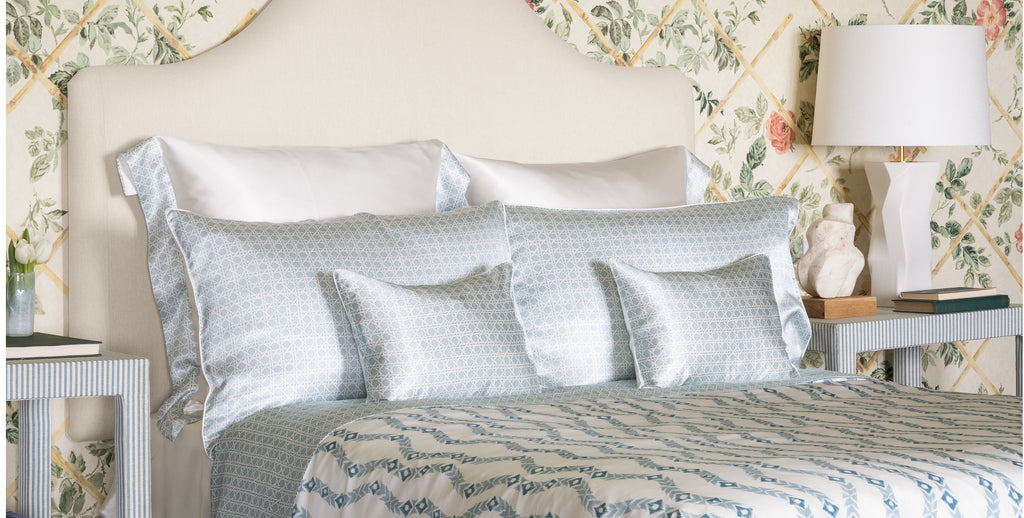
Printed Designs - Rattan Blue Bed Linen Collection
Invest in a silk bedding set with Gingerlily
It is clear to see why these two fabrics are some of the most popular choices for bedding sets. If you’re thinking about purchasing a bedding set, browse our full collection to find a style that suits you.
If you are new to using silk, we recommend that you start with one of our luxurious pillowcases. This way you can see how the material feels against your skin, as you start to see the benefits yourself whilst you enjoy a deep and comfortable slumber.
